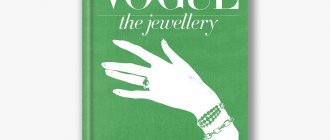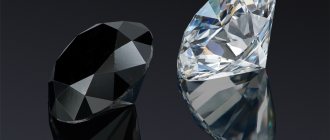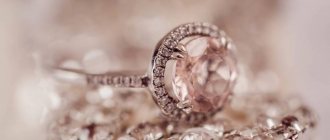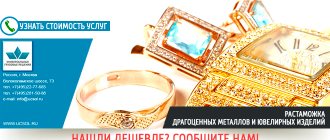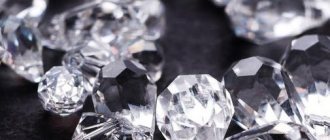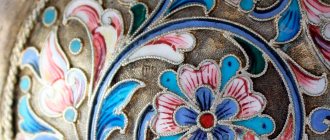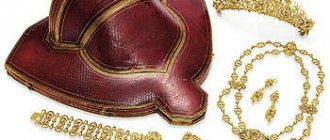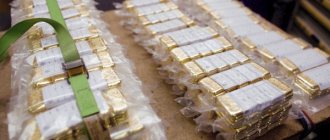"Jewelry and style icons of the 20th century"
Authors: Stefano Papi, Alexandra Rose
From the jewelry business, you can be one step closer to fashion and style by opening the book “Jewelry and Style Icons of the 20th Century.” There are no scientific studies on precious stones or tricks for creating this or that jewelry. But it tells in detail and with numerous illustrations about the ladies who knew a lot about the best jewelry and could afford them. Although later most of the contents of the boxes of Maria Callas, Mona Bismarck, and the Duchess of Windsor ended up at auctions, in their best years the jewelry accompanied them everywhere.
The best books about stones and minerals
4.5 thousand types of stones and minerals have been discovered and studied in the world. And since ancient times, they have attracted not only researchers and scientists, but also lovers of magic and traditional medicine.
Books about stones will be of interest to anyone interested in magic, the properties of stones, legends and historical facts associated with them. Practicing with precious stones will teach you how to work with your own energy, reduce stress and find inspiration.
"The Magic of Stones and Crystals"
A charming and beautifully designed book, written with grace, deep knowledge and the magic gained by the authors over 25 years of world travel, spiritual quests and healing practices. The properties of crystals are described here, step-by-step rituals for using them in everyday life are given, diagrams, meditations and visualizations are provided for obtaining the positive energy of stones. The authors managed to create a book that leads to enlightenment with love and positivity.
"Gems. Guide to the world of jewelry secrets"
This book about precious stones is a useful reference point in the field of jewelry secrets. It tells you how to select and evaluate gemstones. The author describes their characteristics, color, transparency and hardness, deciphers their symbolism, and shares their healing properties. Readers will learn to accurately distinguish natural stones from artificial ones. The book also contains illustrations of jewelry and items made from precious stones.
“Wonderful stones. 250 minerals: history, properties, hidden features"
The book describes the magical properties of stones, their energy and healing power, and provides recommendations for choosing stones for rituals and practices. The author of the book, collector Mikhail Loiri, tells historical facts about the discovery of minerals, the legends associated with them and explains their impact on our everyday life. Each stone is accompanied by a unique photograph from the author’s personal collections. For easy navigation, the stones are arranged in alphabetical order, and the chapters of the book are divided into parts.
"Gems. Legends and magic"
In their book, the authors tell you how to control the magical power of minerals to create harmony in various areas of life. The first part of the book describes legends, historical facts and mystical properties of stones. The second part is devoted to magical rituals and practical recommendations for the use of minerals. The last part of the book on stones is a short informational guide to the most common gemstones.
“The magic of crystals for every day. Simple practices with gems and minerals"
Inside her book about stones and minerals, Sandra Kynes gives recommendations on selecting precious crystals that match your zodiac sign, and tells how to cleanse stones for proper use in practices. The author shares daily tips for using stones in accordance with the wheel of the year. Each stone can be assigned to a specific day, taking into account the phase of the moon, the Celtic tree calendar and the correspondence of the crystals to the letters of the Ogham alphabet.
“Healing energy of stones. Crystal therapy for beginners"
Readers of the book will learn how to choose the right stones, how to use them to cure diseases, how they affect the human energy body, and how to do stone massage correctly. Vladimir Dobrov, a specialist in quantum medicine and crystal therapy, explains in his book the effect of minerals on humans: each stone, like our internal organs, has its own vibration frequency. The diseased organ changes its frequency, but it can be restored using a suitable stone.
"Encyclopedia of Crystals, Precious Stones and Metals"
Scott Cunningham's comprehensive, easy-to-follow guide reveals the secrets of 100 gemstones and minerals. In the book, the author gives advice on choosing, collecting and cleaning stones, their use in fortune telling, spells and reading Tarot cards. Readers learn to identify the type of energy of stones, understand their symbolic meaning and charge them for work. An interesting and beautifully designed encyclopedia for all those interested in the study of stones.
“Enchantment of stones. Healing and magical properties of stones and minerals"
Stone therapy specialist Lilia Brandt introduces readers to alternative techniques: stone massage, crystal therapy, treatment with salt, sand, clay and precious stones. The book contains recipes for masks and baths made from natural minerals. The author talks about the healing and magical qualities of stones, their effect on the body, the principles of their selection and the rules for handling them.
4 691
"Jewelry. Gems. Buyer's Guide"
Authors: Antonio Bonanno, Antoinette Matlins
Jewelry attracts with its brilliance, beauty and grace. But relying only on external charm to choose a new precious friend is short-sighted. Many, as we know, later pay for such carelessness, hearing from an expert the verdict on the carefully accumulated jewelry: fake! To protect yourself from unpleasant news, you should prepare and stock up on knowledge on how to determine the value and not pay an inflated amount for the jewelry you like. Buyer's Guide to help you. A few hours of reading and studying, and the conversation when choosing jewelry will turn from emotions to a business plane.
Magic stones: 72 books - download to fb2, txt for android or read online
Since ancient times, man wanted to know what awaits him ahead, what fate the gods have prepared for him. In Rus', sorcerers or magicians were engaged in his prediction. With the help of complex rituals and magical actions, they “looked” into the future. However, even our ancestor, who did not have magical abilities, had access to simple fortune telling in everyday life.
The Slavs used fortune telling on everything: molten wax and tin, silver mirrors, water, bones, animal entrails, grains, beans, porridge, animal cries, runes, stones, flowers, household items. Much later, fortune telling using coffee grounds, drunken tea and playing cards appeared.
Our ancestors used for fortune-telling what could be obtained in nature. Despite all the accessibility of fortune telling, its action was certainly timed to coincide with certain ritual or agricultural holidays, which means there was a link to the Slavic calendar.
In the calendar, the Slavs expressed their vision of nature, often supplemented by a mystical aspect, as well as the everyday real world, filled with everyday worries. The real world and the mystical, divine, otherworldly world were closely intertwined among the Slavs.
Divine myths sought continuation in simple life; for our ancestors they were simple and clear, taken on faith, absorbed with mother’s milk. The moon and sun were deified and determined natural, agricultural cycles and the life of the peasant in general. Plants sown or harvested at the wrong time could lead to hunger and serious consequences.
Therefore, the Slavs paid great attention to ritual holidays, conspiracies, amulets and fortune telling. Christmastide, Maslenitsa, Green Christmastide, Kupala are traditional Slavic holidays of the renewal of the world, associated with the solar cycle. Our ancestors carefully monitored the changing state of the sun and, with the help of special rituals, celebrated the death of the old world and the birth of a new one.
At this time, rituals of cleansing the house and body, special spells and fortune telling were performed. With the advent of Christianity, the usual daily way of life of the Slavs remained almost unchanged. Their perception of the world around them has not changed either. Therefore, the clergy adapted the Christian calendar together with the ancient Slavic calendar.
This is how the now famous Russian Orthodox calendar came about. The book is intended for a wide range of readers, in particular for those who are interested in esotericism. The material is presented in a simple, accessible form. A parallel is drawn between ancient Slavic rites, fortune telling, rituals and the most significant Christian holidays.
"Jewelry Treasures of the Russian Imperial House"
Authors : Igor Zimin, Alexander Sokolov
The jewelry of Elizabeth II, Queen of Great Britain, remains on display. The Queen wears one or another set in accordance with the occasion and etiquette. You can find references and photographs of her diamonds here and there in reviews and articles. The decorations of the Russian Imperial House do not have such strong information support. To find out the details and see the products, you need to be active - go to a museum or read, for example, the book “Jewelry Treasures of the Russian Imperial House”. The authors made sure that the description was detailed, fascinating and original. Details about suppliers, donors, thieves... - all this is part of the great jewelry history of the Russian Imperial House.
“Boucheron. Secret archive of the most famous jewelry house"
Author: Vincent Meylan
Back in 1858, a jewelry house was founded, immortalizing the name of the owner Frederic Boucheron. At first, the house was a small workshop, but in an elite area of Paris. The jeweler's ideas were so bright that the list of customers expanded every second, and in 1893 the house moved to the so-called Golden Triangle - Place Vendôme. With the growing love of customers, interesting stories, unexpected orders and proposals also happened... You can now read more about all this in the book “Boucheron”, based on the archives. The secret archive of the most famous jewelry house."
"Jewelry. The art of choosing the best"
Author: Margot Raffaelli
Looks like this is the book worth asking for as a gift. "Jewelry. The art of choosing the best" is a guide to the world of precious stones, jewelry and those who create them. It is written by Margot Raffaelli, a jewelry expert and blogger. If before reading this work you have many questions about the jewelry world, then with the last sentences you read, knowledge and emotions will replace the blank spots. Moreover, the author reveals his own secrets on how to choose, wear and combine jewelry.
Read online “Minerals and Gems”
Sergey Afonkin
Minerals and gems
© V. A. Karachev, text, cover design, illustrations, 2008–2016
© V. A. Karachev, compilation of the series, 2000–2016
Introduction
Many gemstones - aquamarines, diamonds, emeralds and sapphires - are crystals. These are amazing creatures of nature. Crystals are believed to have some properties of living things. In fact, they know how to grow. You can verify this by looking at how frosty patterns appear on the window; Frozen water has a crystalline structure. Crystals can multiply: where there was one crystal, over time a whole group of them can appear. Crystals can heal damage. They have a clear structure, which seems to be inherited. Of course, no one directly calls crystals living beings, but still the list of their features is impressive. Especially considering that many people believe in the healing properties of crystals and their ability to influence a person’s mood.
How can the appearance of crystals be explained? Their constituent atoms or more complex compounds can be represented as puzzle pieces. They produce such pictures for children and adults - they must be assembled from separate pieces. Each piece connects to the next one, as a result the whole picture begins to grow. So are crystals, but their shape depends on what elements they are made of.
In other minerals, the crystalline structure is not so noticeable, but this does not make them any less interesting. The emergence of mineral science is inextricably linked in history with precious stones. People's acquaintance with the world of gems began in the Paleolithic. Flint, lapis lazuli, jade, obsidian and some other precious stones were well known to ancient people. The most ancient finds of precious stones at sites of primitive people date back to the 12th millennium BC.
The ancient Babylonians (XIX–VI centuries BC) wore signet rings carved from carnelians, hematites, agates and chalcedony. The ancient Egyptians were well aware of such gems as agate, turquoise, emerald, lapis lazuli, onyx, sardonyx, carnelian and jasper. The oldest handwritten source of information about gems that has come down to us is the work of Theophrastus “On Stones,” which is dated by historians to 315 BC. Around this time, a machine for processing gems was invented. The campaigns of Alexander the Great (343–323 BC) gave historians interesting information about precious stones known to the ancient Hindus. Interesting information about the mystical and medicinal properties of precious stones is presented in medieval encyclopedias called lapidaries.
The field of scientific knowledge about semiprecious stones - gemology - emerged as an independent scientific discipline relatively recently. The term “gemmology” itself was created only in 1892. It is derived from the English word gem, which has several meanings: “precious stone”, “gem”, “jewelry”, and goes back to the Sanskrit word gema, which denoted some precious stones . It is not easy to answer the seemingly simple question of whether a given stone is precious. The fact is that in gemology there is no natural classification of precious stones based on crystallographic data. In other words, mineralogy has not developed its own “periodic table” of gemstones, and it is unlikely that it will ever be created. Each crystal and gemstone is good in its own way. Let's get to know some of them.
“Faberge – “Minister of Jewelry””
Authors: Tatiana Faberge, Valentin Skurlov
Taking a look behind the scenes of the most famous jewelry house, which still excites the hearts of collectors, is a stroke of luck. And to find out the details of how ideas were born and the jewelry masterpieces that ended up in the palace were created, first-hand, from the chief master of the company, is like a journey into the past, at a time when Carl Faberge presented masterpiece after masterpiece, developed the business and was the head big family. All this is in the book “Faberge - “Minister of Jewelry Art””.
